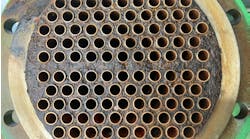Alignment and misalignment are defined by visualizing the shaft centerlines of rotation of two connected machineries as two straight lines in space. Alignment aims to get them to coincide, as close as possible, so as to form one straight line. If they do not, then there exists offset misalignment, angular misalignment, or a combination of the two.
Alignment of machineries demands great care and consideration. For many facilities, alignment remains a difficult trial-and-error task that consumes considerable time and resources. Misalignment and its associated effects, including vibration and equipment damage, are critical issues for any machinery and high-speed or large machineries in particular. All parties, then – machinery manufacturers, contractors, operators, and maintenance teams – need to be aware of alignment’s criticality in ensuring the successful start-up, operation, and long-term reliability of machines. We’ll focus our attention here on alignment for machineries and rotating equipment as well as the consequences of misalignment when it comes to machinery safety and reliability.
Alignment in Machineries
The ultimate goals of shaft alignment are to increase the operating life and reliability of rotating machinery and to achieve high efficiency. When two shafts require alignment, the process usually calls for one machinery shaft to be permanently mounted and the other one to be movable. The fixed machinery is usually the driven equipment. The second machinery element – for instance, the electric motor driver – is moved into approximate alignment in preparation for measurements that will determine the magnitude and direction of moves required to put it in final alignment with the fixed shaft. It is the movable machinery whose shaft will be aligned with the shaft of the fixed machinery.
Read the rest of this article from our sister publication Plant Services.


